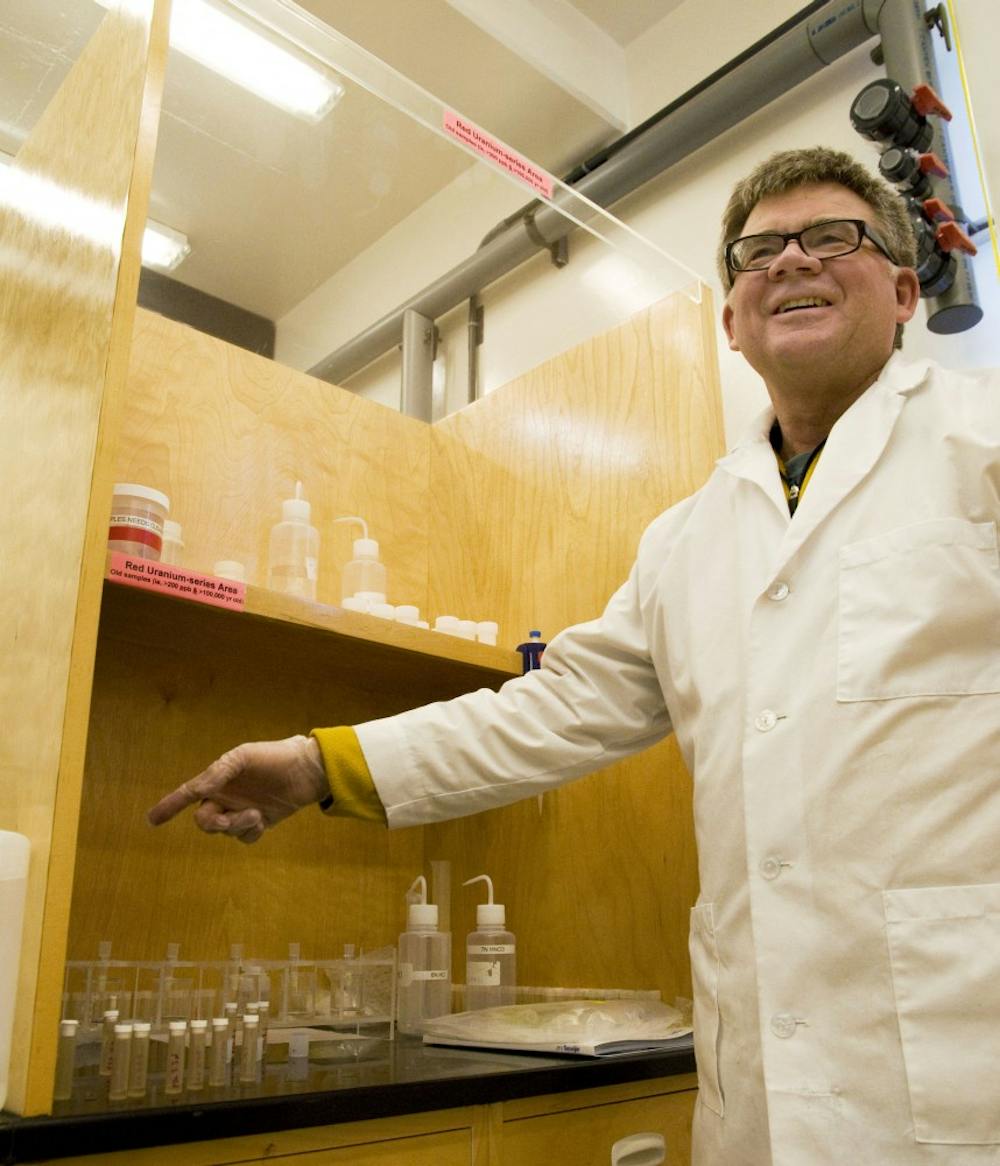Two UNM researchers are examining stalagmites to study the link between winter moisture and the glacial climate shifts.
Yemane Asmerom and Victor Polyak, researchers in the earth and planetary sciences department, work in two major labs at Northrop Hall. There, stalagmite samples from Fort Stanton Cave are broken down, and the uranium and thorium are separated, Asmerom said. The elements then can be analyzed and dated in a mass spectrometer.
“The research was a project we put together and the question was how to respond to rapid cooling variation,” he said. “One of the most interesting scientific problems is the whole issue of global warming as a result of human contribution of carbon dioxide and other greenhouse gases into the atmosphere. The climate is very complex, so we looked at past periods of climate variations and how different parts of the earth responded.”
The National Science Foundation is funding the research with $400,000, in addition to $1 million for instrumentation, Asmerom said.
The University itself has also been supportive with the project, Asmerom said. The lab is one of the best of its kind in the world, with modern mass spectrometers to test the majority of the samples, he said.
Asmerom and Polyak tested a Fort Stanton Cave stalagmite, which grew 11,000 to 60,000 years ago in the cave. The connection between the climate and the samples is found through oxygen isotope variability, Asmerom said.
“Essentially what you have in these yearly layers are variations that reflect the ratios of the precipitation,” he said. “So, when you have specific dominated moisture, like winter moisture, the ratio will be lower compared to summer precipitation. You have a way to track the winter moisture variability over the last 60,000 years.”
The spectrometers used in the study are able to give precise ages of each sample. From that, researchers can determine how winter moisture has varied over time, Asmerom said. The researchers found that climate was changing rapidly and results from large changes in the overall balance and amount of moisture.
“The earth went through global warming and cooling events,” Asmerom said. “It turns out that when the earth went through these episodes, the moisture decreases substantially. If something like that occurred right now, it would be a huge disaster. Basically, additional warming is likely to create dryer conditions.”
They found that the variability is determined by the position of the jet stream. Colder temperatures are from the jet stream being further south, while warmer temperatures result from the jet stream being pushed north.
“The whole issue of global warming is probably one of the most interesting topics right now,”
Asmerom said. “Also, it is one of the most consequential in terms of the way we are going to live, how we are going to live, and the economic impact around the globe.”
Asmerom and Polyak’s research will be published next week in “Nature Geoscience,” a monthly journal.
Get content from The Daily Lobo delivered to your inbox






